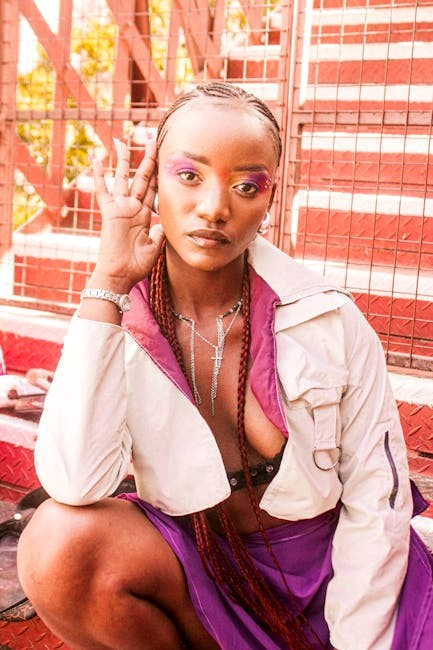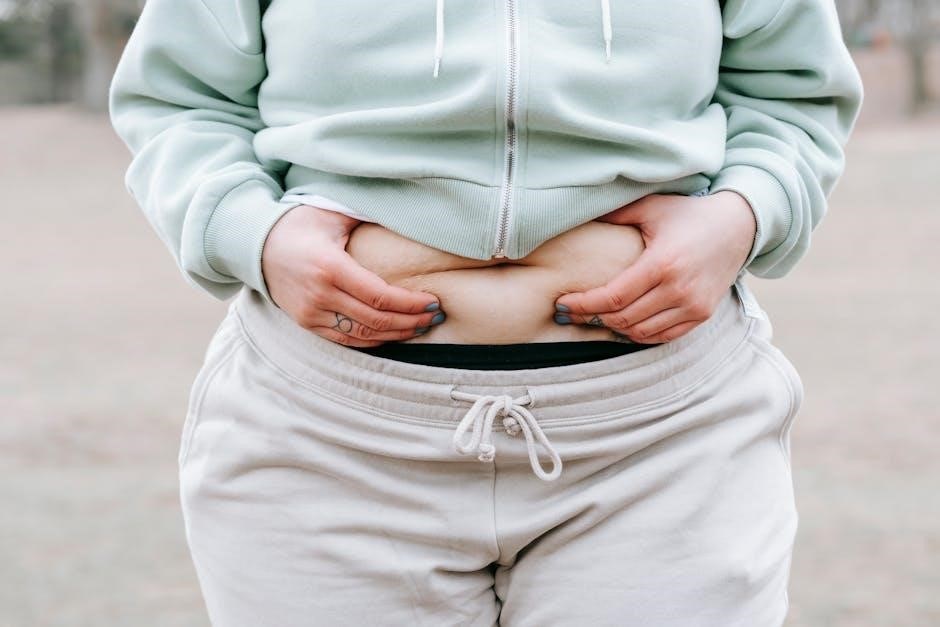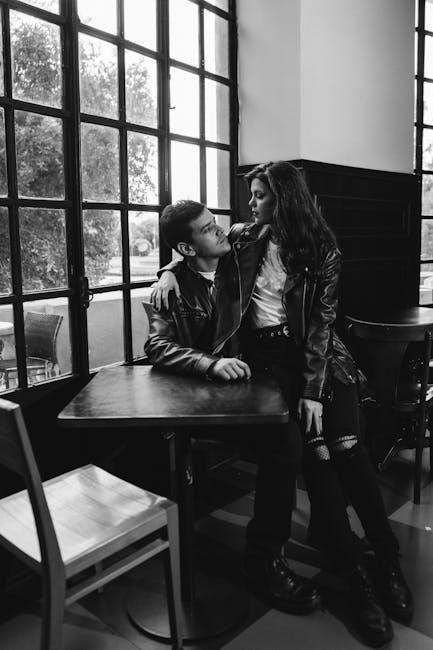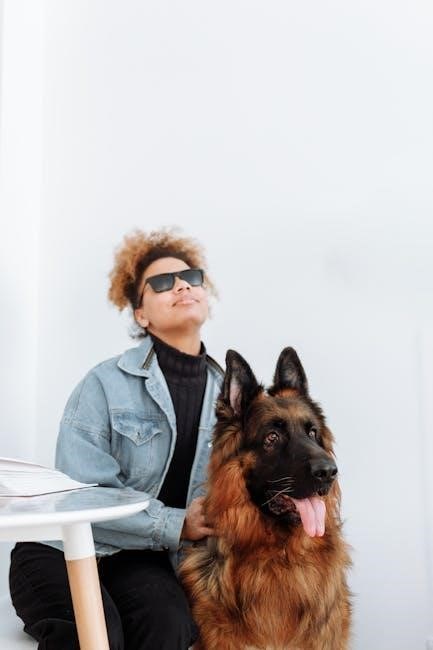Understanding jacket size guides is essential for ensuring the perfect fit, combining style and comfort. Proper sizing enhances mobility and confidence, making it a crucial aspect of apparel selection.
1.1 Importance of Proper Sizing for Jackets
Proper sizing ensures a jacket fits comfortably, allowing optimal mobility and a flattering appearance. A well-fitted jacket enhances confidence, while poor fit can restrict movement or look unflattering. Correct sizing also ensures functionality, such as weather protection or insulation, performs as intended. Investing in the right size guarantees a jacket serves its purpose and lasts longer. Accurate fit is crucial for both practicality and style, making it a cornerstone of a satisfying purchase experience.
1.2 Common Challenges in Finding the Right Jacket Size
Finding the perfect jacket size can be tricky due to inconsistent sizing across brands, varying body types, and language barriers with international sizes. Fabric type, stretch, and layering needs also complicate fit. Many struggle with understanding size charts or measuring correctly. Additionally, personal style preferences for slim, regular, or oversized fits can clash with standard measurements. These challenges highlight the importance of accurate size guides to ensure comfort, functionality, and confidence in one’s choice.

Understanding Jacket Measurements
Understanding jacket measurements is crucial for a perfect fit. Key areas include chest size, sleeve length, and body length. Accurate measurements ensure comfort and style.
2.1 Chest Measurement
Chest measurement is a critical factor in determining jacket size. It involves measuring around the broadest part of the chest, typically just under the armpits. This ensures the jacket isn’t too tight or too loose, allowing for a full range of motion and a comfortable fit. Proper chest sizing also ensures the jacket sits well on the shoulders, enhancing both style and functionality. Accurate chest measurements are essential for a tailored look and optimal comfort.
2.2 Sleeve Length Measurement
Sleeve length is measured from the center back of the neck, over the shoulder, and down to the wrist. This ensures the jacket sleeves fit comfortably without being too short or too long. Proper sleeve length allows for ease of movement and a balanced appearance. Incorrect sizing can lead to discomfort or an unflattering fit, making accurate measurement crucial for a well-fitted jacket. Use a flexible tape measure and stand up straight for the most accurate results.
2.3 Body Length Measurement
Body length is measured from the base of the collar down to the desired jacket hem, typically reaching the hip or just above the thigh. This ensures the jacket sits comfortably, neither too short nor too long. Accurate body length measurement is vital for a flattering fit and proper coverage. Stand straight and use a flexible tape measure to get precise results. This measurement determines the jacket’s overall proportion and style, ensuring it complements your torso shape and personal aesthetic preferences effectively.

Jacket Fit Types
Jacket fit types vary to suit different styles and body shapes, offering options like slim, regular, and oversized fits to cater to individual preferences and needs effectively.
3.1 Slim Fit Jackets
Slim fit jackets are tailored to create a modern, streamlined appearance, fitting closely to the body. They are narrower through the chest and sleeves, offering a sleek, contemporary look. Designed for those who prefer a sharper silhouette, slim fit jackets are ideal for lean or athletic builds. However, they may restrict movement for broader shoulder types. Pairing slim fits with tailored trousers enhances their stylish appeal, making them a versatile choice for both casual and formal occasions. Sizing up can provide added comfort without sacrificing the sleek aesthetic.
3.2 Regular Fit Jackets
Regular fit jackets offer a classic, timeless style with a balanced cut, neither too tight nor too loose. They provide ample comfort and flexibility, making them suitable for a wide range of body types. Ideal for everyday wear, regular fit jackets allow ease of movement and can be layered over sweaters or shirts. This versatile fit works well for both casual and semi-formal settings, ensuring a comfortable yet stylish appearance. It’s a go-to choice for those seeking reliability and practicality in their wardrobe.
3.3 Oversized Fit Jackets
Oversized fit jackets are designed for a loose, relaxed silhouette, offering maximum comfort and a trendy, laid-back appearance. They are ideal for layering over thick sweaters or dresses, creating a stylish contrast. This fit is perfect for those who prefer a casual, modern look and don’t mind a bit of extra room. Oversized jackets are versatile and can suit various body types, making them a popular choice for fashion-forward individuals seeking both comfort and style in their outerwear.

Body Types and Jacket Sizing
Body type significantly influences jacket fit, with inverted triangle, hourglass, rectangular, and pear-shaped frames requiring tailored approaches for optimal comfort and style.
4.1 Jacket Sizing for Inverted Triangle Body Type
Individuals with an inverted triangle body type, characterized by broad shoulders and narrower hips, benefit from jackets that balance their silhouette. A-line or flared styles create proportion, while asymmetrical zippers or diagonal details draw attention downward. Avoid boxy fits, as they accentuate width. Opt for jackets with princess seams or tailored waistlines to enhance curves. Emphasize the bust with patterns or ruffles to create balance. Steer clear of oversized shoulder pads, as they can exaggerate broadness. The goal is to create a harmonious, balanced look that flatters this body type.
4.2 Jacket Sizing for Hourglass Body Type
For hourglass figures, characterized by a balanced bust and hips with a defined waist, jackets that accentuate the waistline are ideal. Look for styles with nipped-in waists or peplum details to highlight curves. A belted jacket can further emphasize the waist. Avoid boxy or oversized fits that obscure the silhouette. V-necklines or open-front designs draw the eye upward, creating a flattering proportion. Tailored blazers and fitted leather jackets also complement this body type, ensuring a polished and feminine look that enhances natural curves.
4.3 Jacket Sizing for Rectangular Body Type
Individuals with a rectangular body type have similar measurements across their bust, waist, and hips. To create the illusion of curves, opt for jackets with defined shoulders, peplum details, or flared hems. A tailored or semi-fitted jacket will add shape, while oversized styles may overwhelm the frame. Look for styles that cinch at the waist or feature asymmetrical zippers to break up the straight silhouette. Shoulder pads can also enhance proportions, creating a more balanced and polished appearance.
4.4 Jacket Sizing for Pear-Shaped Body Type
For pear-shaped individuals, jackets that balance proportions are ideal. Look for styles with padded shoulders to broaden the upper body and create symmetry. Highlight the waist with a belted or cinched design to define the silhouette. A-line jackets or those with flared hems can skim over the hips, while longer jackets can elongate the torso. Avoid clingy fabrics and opt for structured materials that skim the body. Details like pockets or embellishments on the upper half can draw attention upward, enhancing the overall balance.
Jacket Styles and Sizing Considerations
Different jacket styles require tailored sizing approaches to ensure optimal fit and comfort, addressing unique design elements like length, sleeve type, and fabric drape.
5.1 Bomber Jackets
Bomber jackets have a distinctive fit, typically sitting closer to the body with a slightly cropped length. Chest and shoulder measurements are crucial to ensure comfort and mobility. The sleeves should be fitted but not restrictive, while the hem should align with the hip for a balanced look.
Consider your body type; slimmer individuals may prefer a tailored fit, while broader frames might opt for a slightly looser style. Accurate sizing ensures the jacket’s functional and aesthetic appeal. Proper measurements are key to achieving the perfect bomber jacket fit.
5.2 Denim Jackets
Denim jackets are a timeless choice, offering durability and classic style. Fitting varies from slim to oversized, so accurate measurements are vital.
Chest, shoulder, and body length should align with your body type. Slim-fit jackets accentuate a lean frame, while oversized styles offer a relaxed look. Ensure sleeves and hem fit comfortably, allowing for layering. Proper sizing ensures both style and comfort. Denim jackets are versatile, making them a wardrobe staple for many. Always check the size chart for the best fit. Accurate measurements guarantee a perfect denim jacket fit.
5.3 Leather Jackets
Leather jackets are iconic and durable, offering a sleek, edgy look. Fitting depends on style, such as biker, bomber, or oversized.
Measure chest, waist, and sleeve length accurately. Leather has minimal stretch, so ensure a snug yet comfortable fit. Consider layering needs; bomber styles often have a roomier design. Regular fit suits most body types, while oversized offers a trendy look. Proper sizing ensures optimal comfort and style. Leather jackets are an investment piece, so precise fit is crucial. Always refer to the size chart for the best result.
5.4 Parka Jackets
Parka jackets are designed for durability and warmth, often featuring waterproof and breathable materials. Fitting is crucial for functionality, as parkas are typically longer and may include hoods. Measure chest, sleeve, and body length to ensure a snug yet comfortable fit. Consider layering needs, as parkas are often worn over thick sweaters or fleeces. Proper sizing ensures optimal mobility and weather protection. Look for adjustable cuffs and hem to customize the fit. Accurate measurements guarantee both utility and style in a parka jacket.

How to Measure for a Jacket
Accurate measurements are key for the perfect fit. Chest, sleeve length, and body length are essential. Use a flexible tape measure and ensure the jacket is fitted but not restrictive.
6.1 Measuring Chest Size
Measuring chest size is crucial for a well-fitting jacket. To do this, stand upright and wrap a flexible tape measure around the broadest part of your chest, typically just under the armpits. Ensure the tape is snug but not too tight, keeping the arms relaxed at your sides. The measurement should reflect the circumference of your chest, which directly corresponds to jacket sizes. Accurate chest measurement helps determine the best fit for comfort and style.
6.2 Measuring Sleeve Length
Measuring sleeve length ensures your jacket fits perfectly from shoulder to wrist. Stand straight, raise your arm slightly, and measure from the center back of your neck, over your shoulder, and down to your wrist. Keep the tape measure level and not too tight. This ensures the sleeve length is proportional to your body, providing comfort and style. Accurate sleeve measurement is vital for a jacket that feels tailored to your frame, avoiding sleeves that are too short or overly long.
6.3 Measuring Body Length
Measuring body length ensures your jacket fits perfectly from top to bottom. Stand straight and measure from the base of your neck down to your hip or the desired jacket length. Keep the tape measure level and relaxed. This ensures the jacket sits comfortably, neither too short nor too long. Proper body length measurement is crucial for a balanced look and optimal functionality, ensuring the jacket meets your style and practical needs effectively.

Factors Affecting Jacket Fit
Fabric type, stretch, and layering impact how a jacket fits. Hood size, body type, and style also play roles in achieving the perfect, comfortable fit.
7.1 Fabric Type and Stretch
Fabric type and stretch significantly influence jacket fit. Stretchy materials like elastane provide flexibility, while non-stretch fabrics offer structure. Thicker fabrics may require sizing up for comfort. Layering under jackets can affect fit, so consider the thickness of inner clothing. Understanding fabric properties ensures a balanced fit, blending style and functionality seamlessly. Proper fabric choice enhances both aesthetic appeal and practicality, making it a key factor in selecting the right jacket size.
7.2 Layering Under the Jacket
Layering under a jacket can alter its fit, requiring adjustments to size. Thicker layers like sweaters or fleeces add bulk, potentially necessitating a larger size. Conversely, lightweight layers may not affect sizing much. It’s important to consider how many layers will be worn to ensure the jacket fits comfortably without feeling too tight or restrictive; Properly accounting for layering ensures optimal comfort and mobility, making it a critical factor in choosing the right jacket size for various occasions and weather conditions;
7.3 Hood Size and Fit
Hood size and fit play a significant role in jacket comfort and functionality. An adjustable hood ensures a secure fit, preventing wind or rain from seeping in. A hood that is too tight may restrict movement, while one that is too loose may not provide adequate protection. Proper hood sizing is essential for maintaining visibility and comfort, especially in harsh weather conditions. Ensuring the hood aligns with your head size and preferences is crucial for both practicality and style, making it a key factor in overall jacket fit.

Jacket Size Charts
Jacket size charts vary, with standard measurements offering a universal guide, while specific brands tailor sizes to their design ethos. Always check the chart for accurate fit.
8.1 Standard Size Charts
Standard jacket size charts provide a universal guide based on common measurements, helping consumers find their fit across different brands. These charts typically include chest, sleeve length, and body length measurements, ensuring consistency. By referencing standard charts, shoppers can make informed purchases, reducing sizing discrepancies. However, variations may exist, so comparing brand-specific charts is advisable for optimal fit and satisfaction.
8.2 Size Charts for Different Brands
Size charts vary significantly between brands due to differences in design, fit, and target audiences. While standard charts offer a baseline, each brand tailors its sizing to reflect its unique style. For instance, luxury brands might emphasize a slimmer fit, while outdoor brands prioritize functionality. Checking the specific size chart for each brand ensures the best fit, as sizing can differ even within similar categories like bomber or denim jackets, where cut and fabric play a role in measurements.

Tips for Choosing the Right Jacket Size
Selecting the right jacket size ensures comfort and style. Consider body type, measure accurately, and refer to size charts. Reading reviews helps confirm fit preferences.
9.1 Consider Your Body Type
Understanding your body type is crucial for selecting a jacket that flatters your frame. For inverted triangle shapes, jackets with structured shoulders balance proportions. Hourglass figures benefit from tailored styles that accentuate the waist. Rectangular body types can add curves with detailed or asymmetrical designs. Pear-shaped individuals should look for jackets that draw attention upward, creating a balanced silhouette. Each body type has unique needs, and choosing a jacket that complements these features ensures a polished look.
9.2 Check the Size Chart
Always refer to the size chart provided by the brand or retailer, as sizing can vary significantly. Measure yourself accurately and compare your dimensions to the chart. Pay attention to chest, sleeve length, and body length measurements. Different brands may have unique sizing standards, so relying solely on your usual size can lead to poor fit. Use the chart to ensure the jacket aligns with your body measurements, enhancing both style and comfort. This step is crucial for avoiding sizing mismatches and ensuring satisfaction with your purchase.
9.3 Read Reviews for Fit Feedback
Reading reviews from other customers can provide valuable insights into how a jacket fits. Many reviewers share details about sizing accuracy, comfort, and whether the jacket runs small or large. Pay attention to feedback from individuals with similar body types or preferences. This can help you gauge if the jacket will meet your expectations regarding fit and comfort. While size charts are helpful, real-world feedback often offers a more personalized perspective, reducing the risk of sizing errors and enhancing your shopping experience.

Common Mistakes in Jacket Sizing
Common mistakes include ignoring body type, not measuring properly, and assuming all brands size the same. Avoiding these errors ensures a better fit and satisfaction with your purchase.
10.1 Ignoring Body Type
Ignoring your body type is a common mistake when selecting jacket sizes. Different body types, such as inverted triangle, hourglass, rectangular, or pear-shaped, require tailored fits. For example, an inverted triangle body type benefits from jackets that balance broad shoulders, while pear-shaped individuals need jackets that flare slightly at the hips. Failing to consider body type often results in poor fit, restricted movement, or an unflattering silhouette. Always assess your body type to ensure the jacket complements your natural proportions for optimal comfort and style.
10.2 Not Measuring Properly
Not measuring properly is a common mistake that can lead to ill-fitting jackets. Accurate measurements ensure the jacket isn’t too tight or too loose, providing comfort and mobility. Improper measuring can result in restricted movement, an unflattering appearance, or functional issues like sleeves being too short or long. Always use a flexible tape measure to take precise chest, sleeve, and body length measurements. This step is crucial for matching your dimensions to the size chart and ensuring a perfect fit for your jacket.
10.3 Assuming All Brands Size the Same
Assuming all brands size jackets identically is a common mistake that leads to poor fit. Sizing standards vary significantly between brands due to differences in design, fabric, and target audiences. Some brands may cut jackets larger or smaller than others, even within the same nominal size. Always consult the specific brand’s size chart to avoid issues like jackets being too tight or too loose. This ensures a comfortable and flattering fit tailored to the brand’s unique sizing approach.

How to Adjust or Exchange a Jacket
- Understand the return and exchange policies of the retailer or brand.
- Double-check measurements to ensure accurate sizing before requesting an exchange.
- Consider professional alterations if minor adjustments are needed.
- Contact customer service for guidance on the process.
11.1 Understanding Return Policies
Understanding return policies is crucial for a smooth jacket exchange or adjustment process. Most retailers offer a specific timeframe for returns, typically 30 to 60 days. Ensure the jacket is in its original condition with tags intact to qualify for a refund or exchange. Some brands may charge a restocking fee, while others offer free returns. Review the policy carefully to avoid surprises. Clear understanding of these terms ensures a hassle-free experience if adjustments or exchanges are needed.
11.2 Alteration Options
If your jacket doesn’t fit perfectly, alterations can be a practical solution. Tailors can adjust sleeve length, hem, or shoulder fit to ensure a tailored look. Common alterations include shortening or lengthening sleeves, taking in or letting out seams, and adjusting the jacket’s body length. Acting quickly is key, as many retailers have time limits for alterations while honoring returns. Professional tailors can transform an ill-fitting jacket into a custom-fit piece, ensuring comfort and style without the need for a new purchase.




